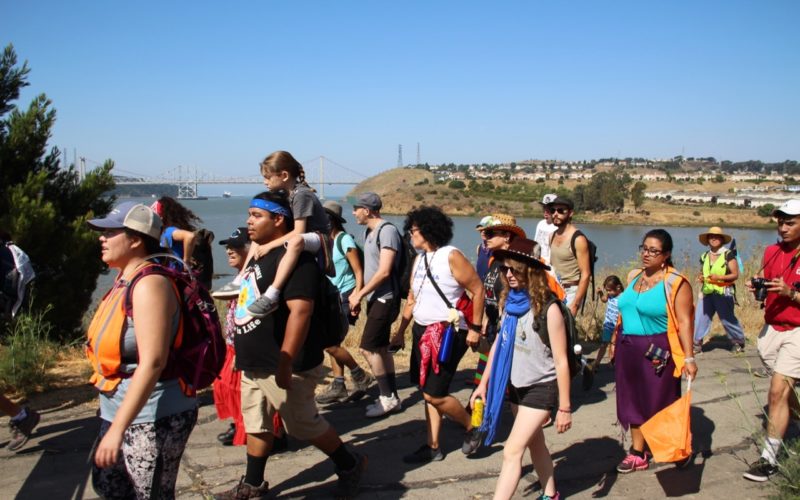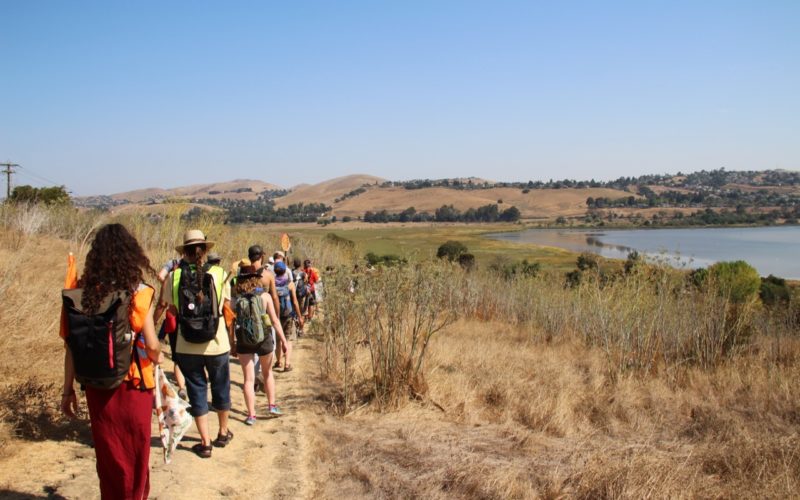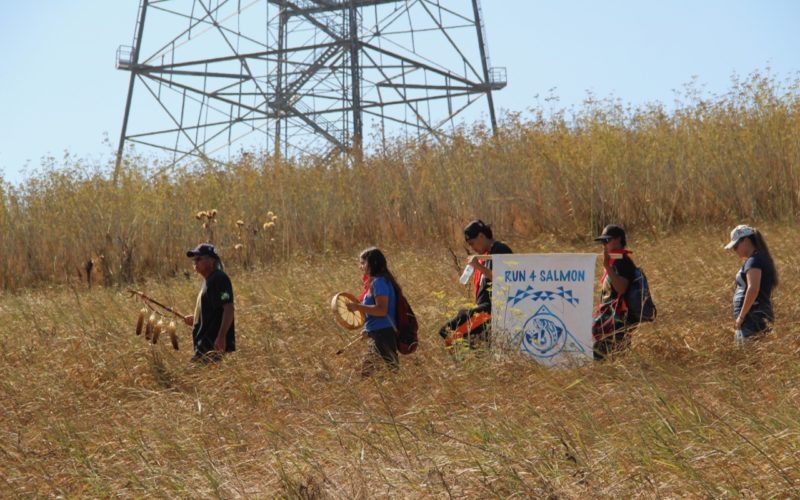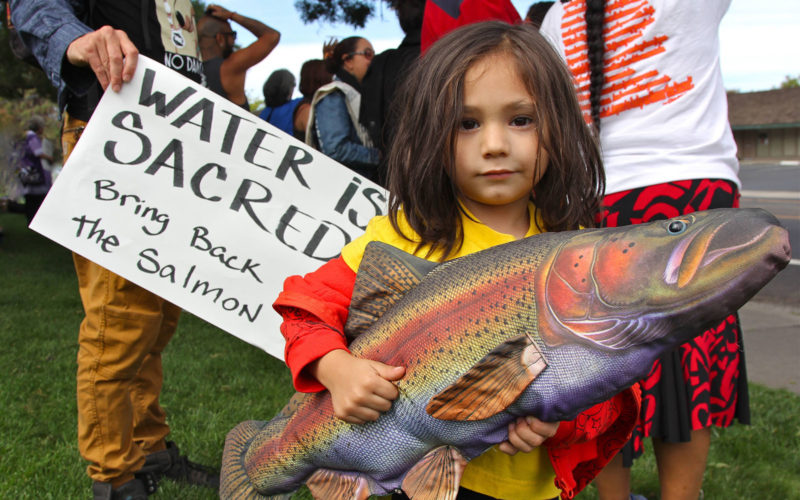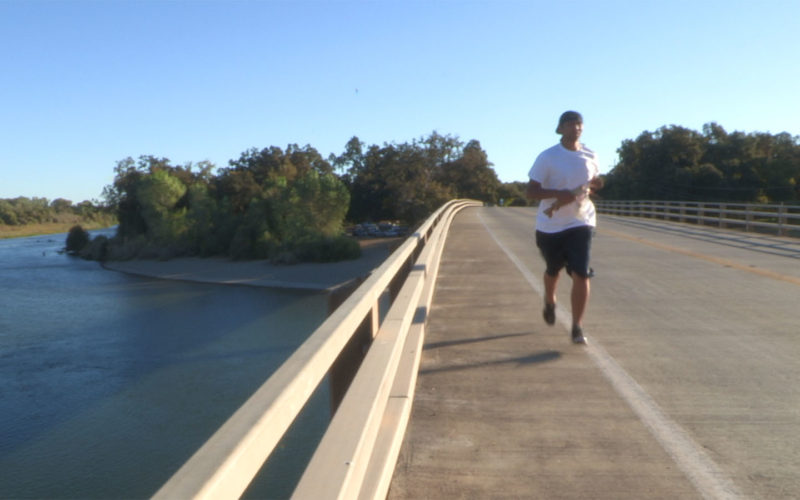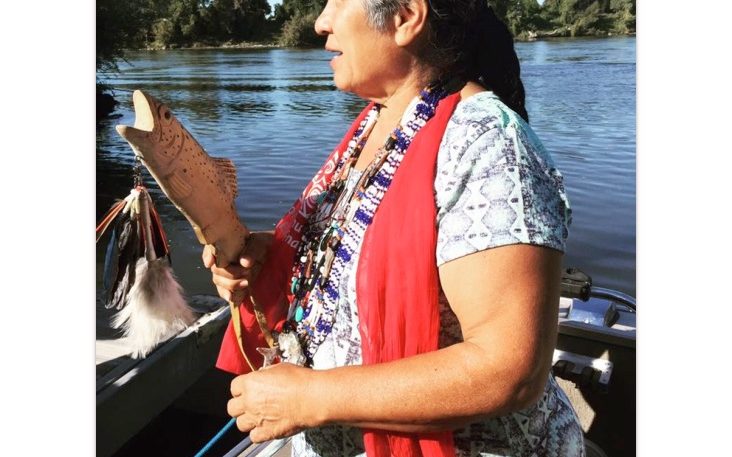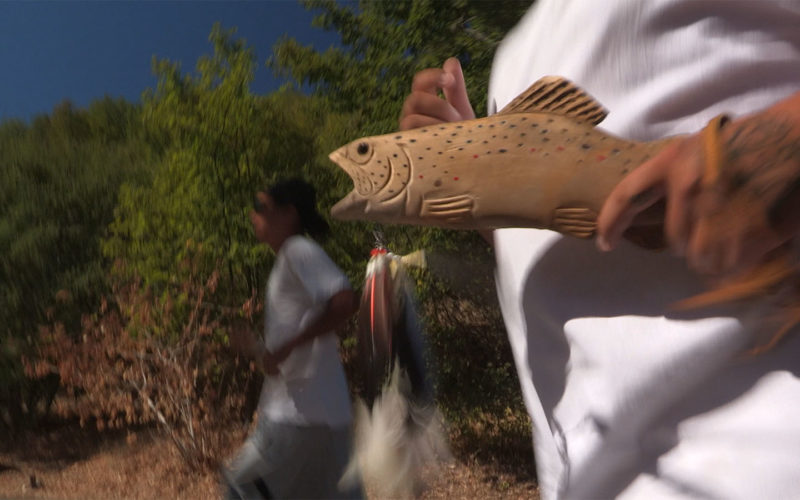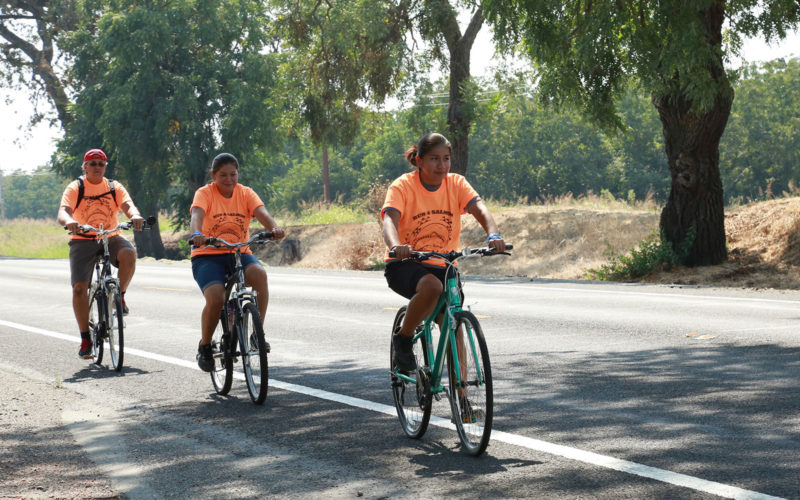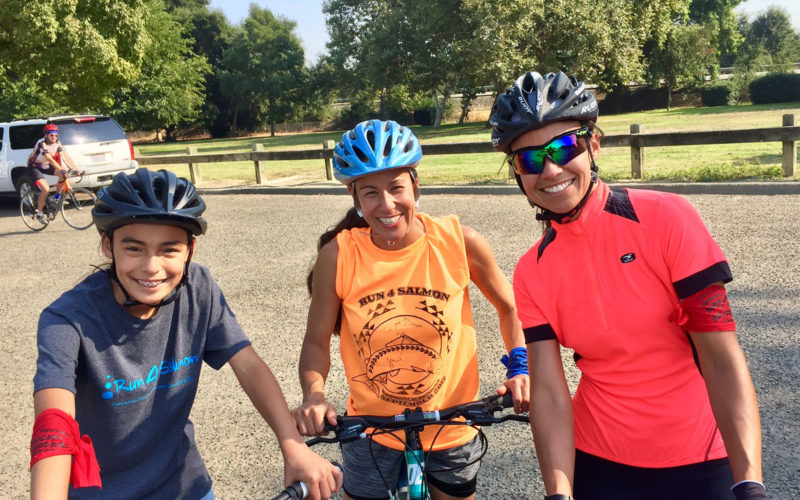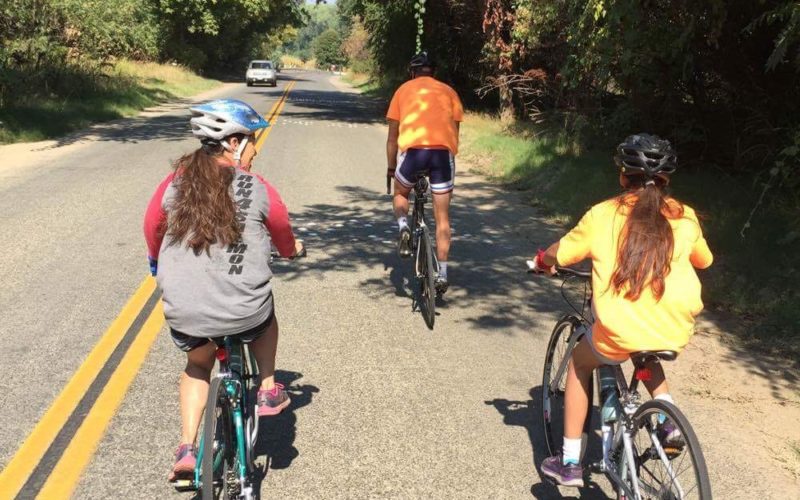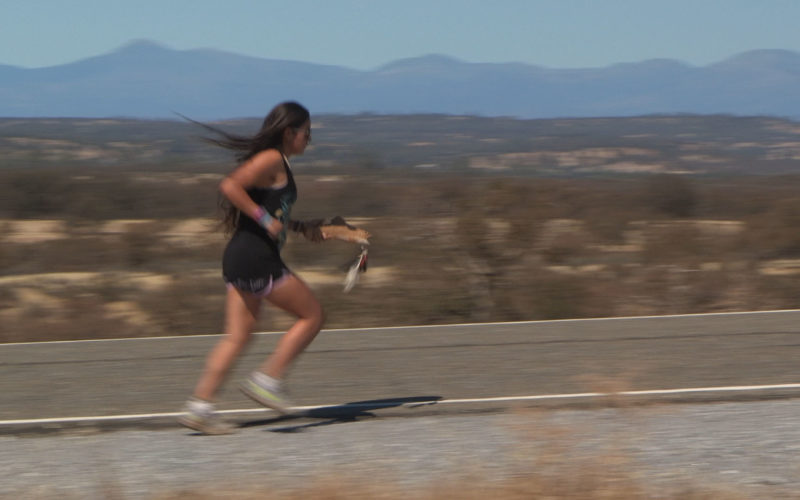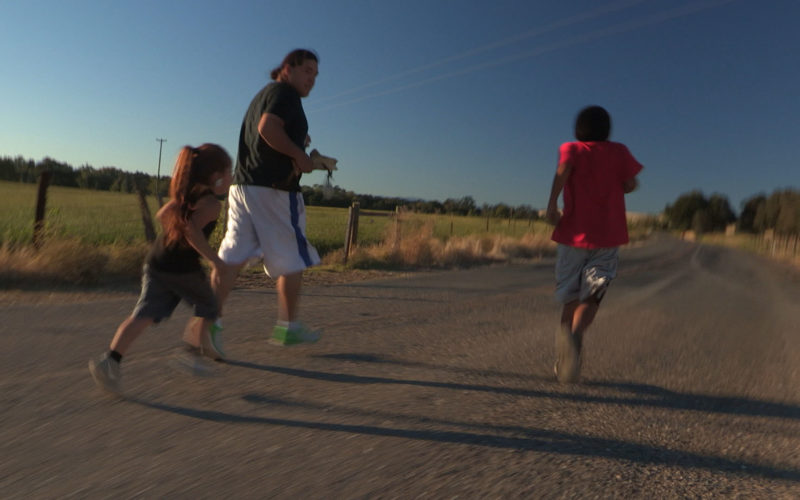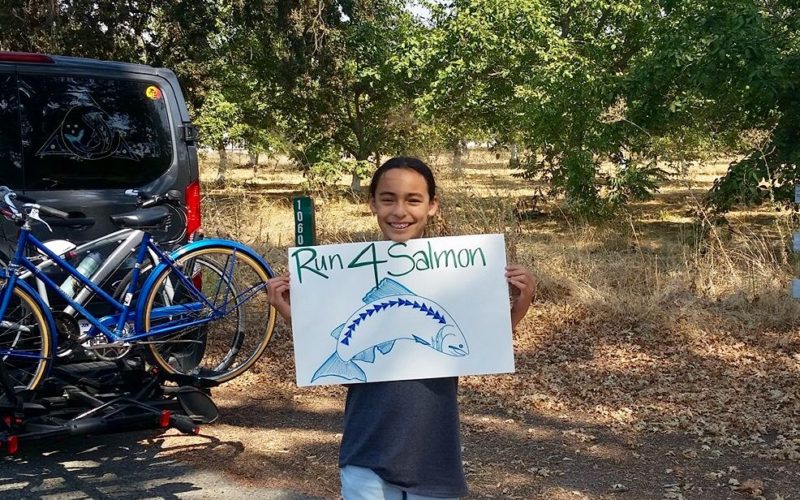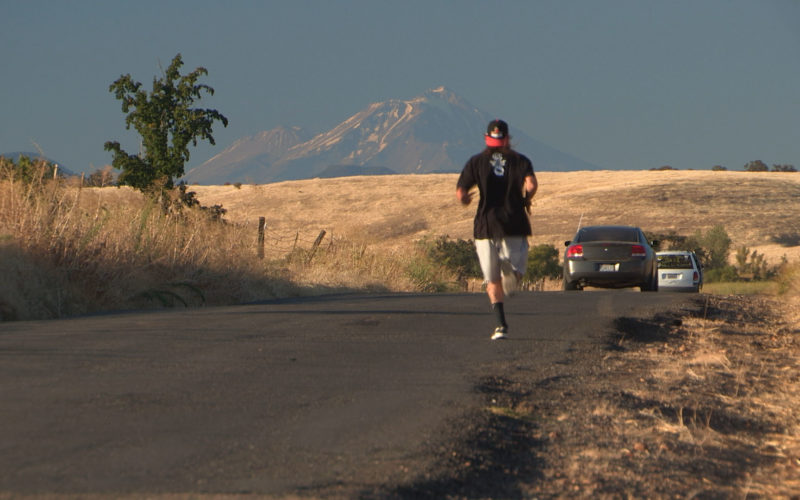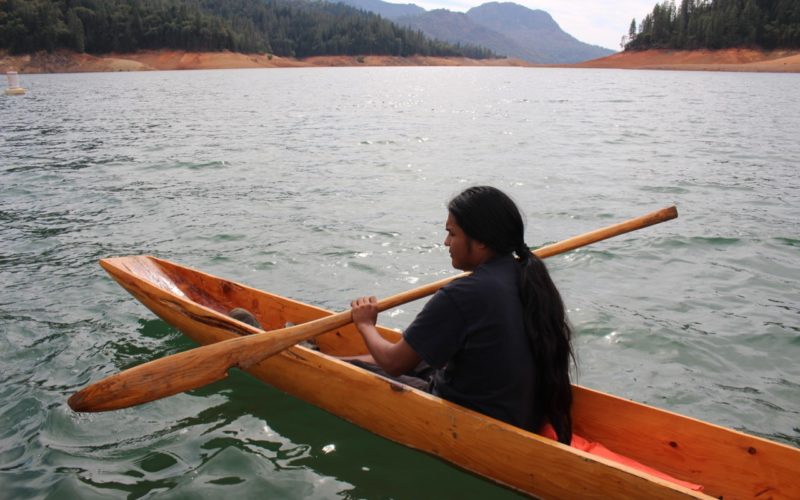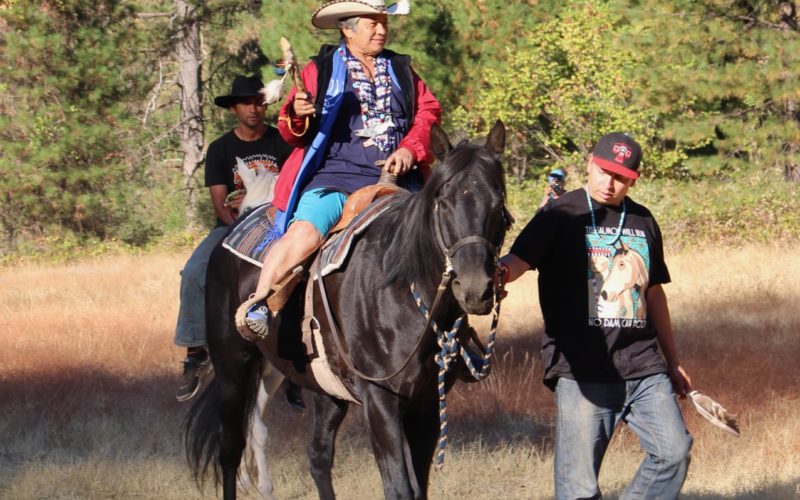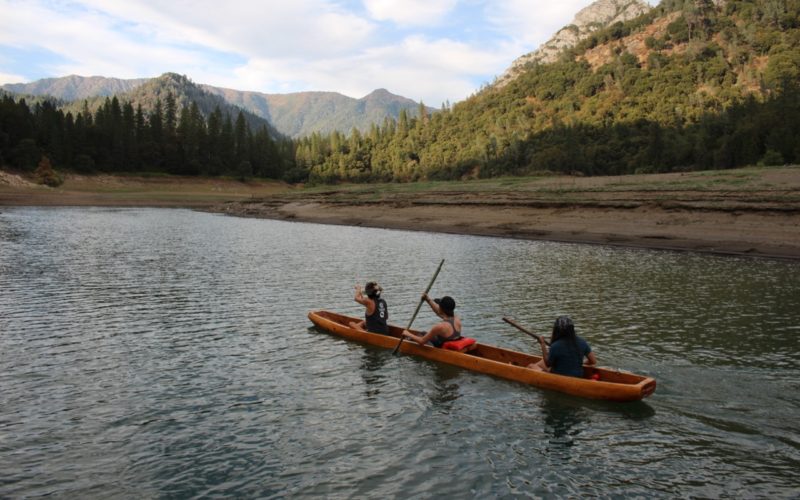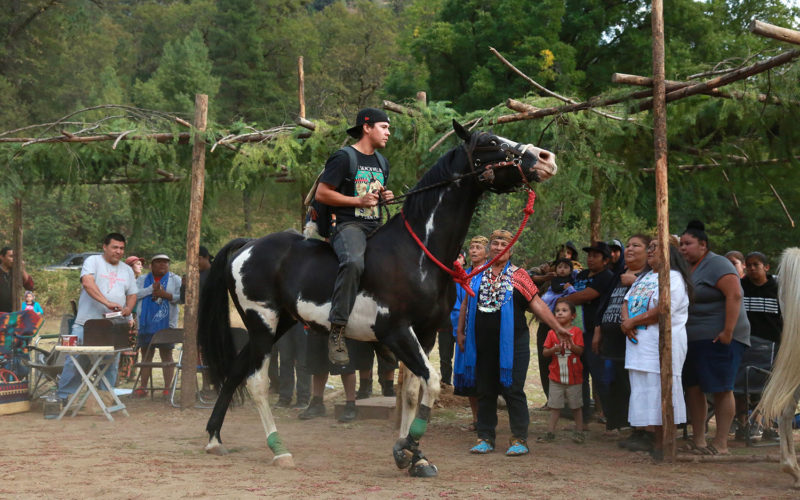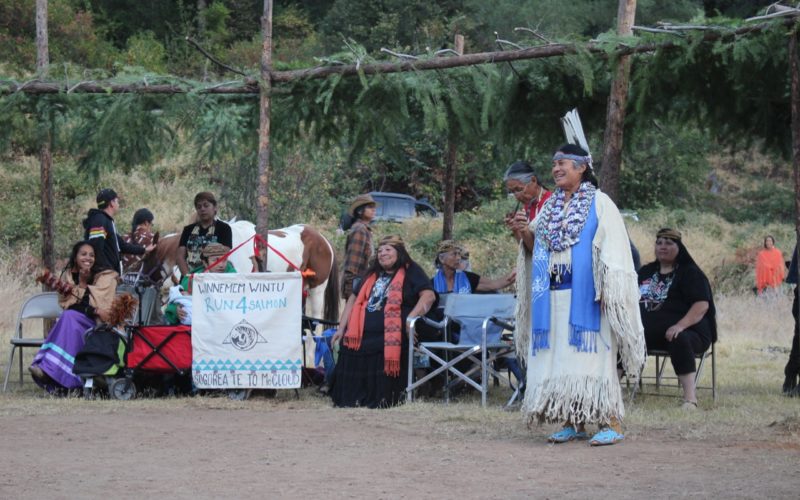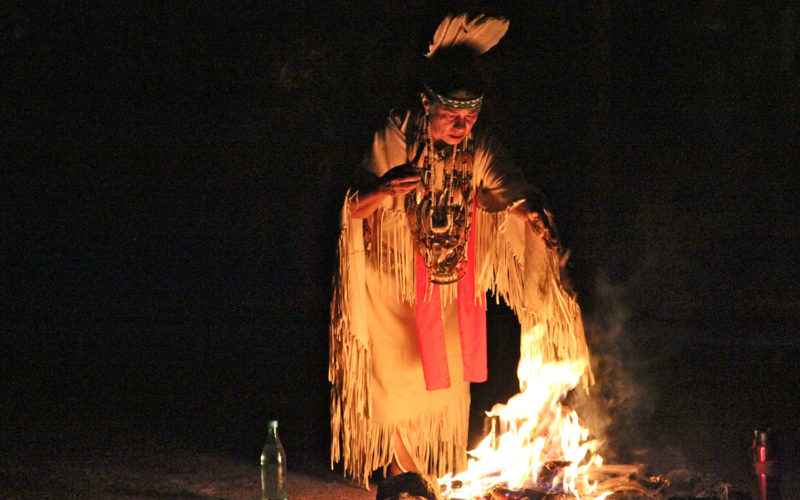MENU
Winnemem speaking for the salmon: Run4Salmon
Standards: HSS 4.2, CCSS W4.1
Objective
Students will learn about the Winnemem Wintu’s efforts to bring salmon back to the McCloud River.
Materials
- Run4Salmon Slideshow Part 3 (below)
- Teacher Background Information and Links (provided below)
- Dancing Salmon Home video clip: Bringing the Salmon Home (12:51)
- Students’ California Watershed Maps
- Optional Extra: One Word: Sawalmem film (20:00)
- Optional Extra: Salmon Template (PDF)
- Optional Extra: Run4Salmon Song
Estimated Time
1-2 class sessions (if optional resources are used)
Slideshow Part 3: Run 4 Salmon
Click on the slide box below to view in full screen mode
Background Information for Teachers
- Dancing Salmon Home Video Clip: Chief Sisk – Current Situation (7:24)
- Text resource:
 In 2004, news coverage of the Winnemem Wintu’s War Dance on Shasta Dam reached New Zealand. Winnemem leader Caleen Sisk received a phone call from a professor in New Zealand who said, “We have your fish.” It was the first time the tribe had heard of their Chinook salmon thriving in New Zealand’s Rakaia River.In 2010, the Winnemem were invited by the Maori of New Zealand to visit the salmon. With the Maori’s permission, the Winnemem held a ceremonial dance along the Rakaia riverbank and sang to the salmon. The tribe then proposed to the United States government that some fish be returned from the Rakaia to the McCloud River watershed. Federal agencies, coping with the dire condition of the Sacramento River winter-run Chinook salmon, are now considering the Winnemem proposal. (A 2009 “biological opinion” issued by federal scientists concluded that Chinook salmon need to return to the glacial waters above Shasta Dam to restore populations and build resilience to climate change.) Testing DNA samples from the New Zealand Chinook for comparison to the California species is the next step.In 2018, Winnemem Wintu Tribe members traveled to New Zealand with biologists in order to take samples from Rakaia River salmon. The fish were not harmed in the process, as biologists can study DNA from a few scales or tiny pieces of a fin, just as human DNA can be studied from saliva, hair or fingernails. The samples were delivered to a lab at U.C. Davis to determine if the DNA is a close match to California Chinook salmon. If government scientists are satisfied that these New Zealand fish are descendants of the McCloud River salmon, it will be possible to import healthy salmon to invigorate the endangered California population.
In 2004, news coverage of the Winnemem Wintu’s War Dance on Shasta Dam reached New Zealand. Winnemem leader Caleen Sisk received a phone call from a professor in New Zealand who said, “We have your fish.” It was the first time the tribe had heard of their Chinook salmon thriving in New Zealand’s Rakaia River.In 2010, the Winnemem were invited by the Maori of New Zealand to visit the salmon. With the Maori’s permission, the Winnemem held a ceremonial dance along the Rakaia riverbank and sang to the salmon. The tribe then proposed to the United States government that some fish be returned from the Rakaia to the McCloud River watershed. Federal agencies, coping with the dire condition of the Sacramento River winter-run Chinook salmon, are now considering the Winnemem proposal. (A 2009 “biological opinion” issued by federal scientists concluded that Chinook salmon need to return to the glacial waters above Shasta Dam to restore populations and build resilience to climate change.) Testing DNA samples from the New Zealand Chinook for comparison to the California species is the next step.In 2018, Winnemem Wintu Tribe members traveled to New Zealand with biologists in order to take samples from Rakaia River salmon. The fish were not harmed in the process, as biologists can study DNA from a few scales or tiny pieces of a fin, just as human DNA can be studied from saliva, hair or fingernails. The samples were delivered to a lab at U.C. Davis to determine if the DNA is a close match to California Chinook salmon. If government scientists are satisfied that these New Zealand fish are descendants of the McCloud River salmon, it will be possible to import healthy salmon to invigorate the endangered California population.
Activities
Activity 1: Bringing the Salmon Home Video Clip
Dancing Salmon Home Video Clip Bringing the Salmon Home (12:51)
Activity 2: Run4Salmon
- Read excerpt (below)
In 2016, Chief Caleen Sisk of the Winnemem Wintu Tribe led the first Run4Salmon. The Run4Salmon is a prayerful journey of the Winnemem Wintu and their supporters to restore the salmon runs, protect the waters, and indigenous lifeways. The journey retraces the route of the migrating salmon, from the shores of the San Francisco Bay Delta estuary where salmon transition between freshwater and saltwater all the way up to the McCloud River.On the first few days, Winnemem and other participants walked from the Bay, near Vallejo, through Delta lands. Boats met them and carried them to Sacramento and beyond. Cyclists then rode up the Sacramento Valley and runners relayed to Shasta Lake. On the final days, horses, riders, and mountain bikes followed the route of the proposed swimway, as paddlers in dugout canoes made their way across Shasta Lake and up the McCloud River.
Ceremonies marked the beginning and end of the Run4Salmon, and public gatherings including concerts and informational events took place en route.
September 2019 was the fourth annual run, completing the first cycle. Winnemem Wintu Chief Caleen Sisk has decided that the prayer journey will continue “in reverse” for another four years, following the course of the salmon fry from the mountain down the Sacramento River to San Francisco Bay and out into the Pacific Ocean.
- Display Run4Salmon Slideshow Part 3 and course map (http://www.run4salmon.org/)
Activity 3: Compare Maps
Where is Run4Salmon now? Check the location and status of the event at (http://www.run4salmon.org/)
- Students mark the progress on their California Watershed maps
- How many miles have been covered from the start to the run’s current location?
Activity 4 (optional) : watch film- one word : sawalmem
Special opportunity to watch full length film One Word: Sawalmem by Michael Preston and Natasha Deganello Giraudie – an uplifting, internationally-acclaimed, Native-directed short film that’s good for the whole family to watch.
The 20-min film is based on one single question: What’s one word from your sacred language that changed your life and that you can offer to the next generation as medicine to heal our relationship with the Earth?
For Michael Preston of the Winnemem Wintu, son of spiritual leader Chief Caleen Sisk, his one word is Sawalmem. Sawalmem is sacred water.Through this word, he takes us into a rare, intimate, current-day personal portrait of what life is like when you consider water as sacred.
Activity 5: Reflective Writing
Have students write a reflective paragraph. (This can conclude the multiple paragraph composition started in previous lessons). In your opinion, what solution(s) may help the Winnemem Wintu and the restoration of salmon on the McCloud River? Why is it important to stand up and fight to protect your community and its resources? In what ways do the issues facing salmon and water affect you too?
Activity 6 (Optional): Art Connection
Using the salmon template, have each student cut out, color, and write a wish for the salmon, for the Winnemem Wintu, or for the waters. Use these as a bulletin board display on their own or along with students’ writing pieces.
Activity 7 (Optional): Music Connection
Teach students the Run4Salmon song (available on Facebook here):
If we listen to the stars in the sky,
We will walk in harmony with everything that’s alive.
We are rivers running through the sky,
From the ocean to the mountain ’til the salmon arrive.
View the song being performed by fourth graders with hand motions here.
Activity 8 (Optional): Call to Action
Call to Action – Send letters to your elected officials.
Further Connections
Have students participate in local activities to coincide with Run4Salmon events. For instance:
- On boating/paddling days: (if possible), get your class out to a local stream, teach about aquatic ecosystems, discuss salmon biology.
- On running days: have students run in solidarity with the Run4Salmon runners. As in the event, have students relay run a predetermined distance.
- On any day of the event: what is the weather today along the salmon migration route?
- What tribal territories are the participants visiting throughout the run?
